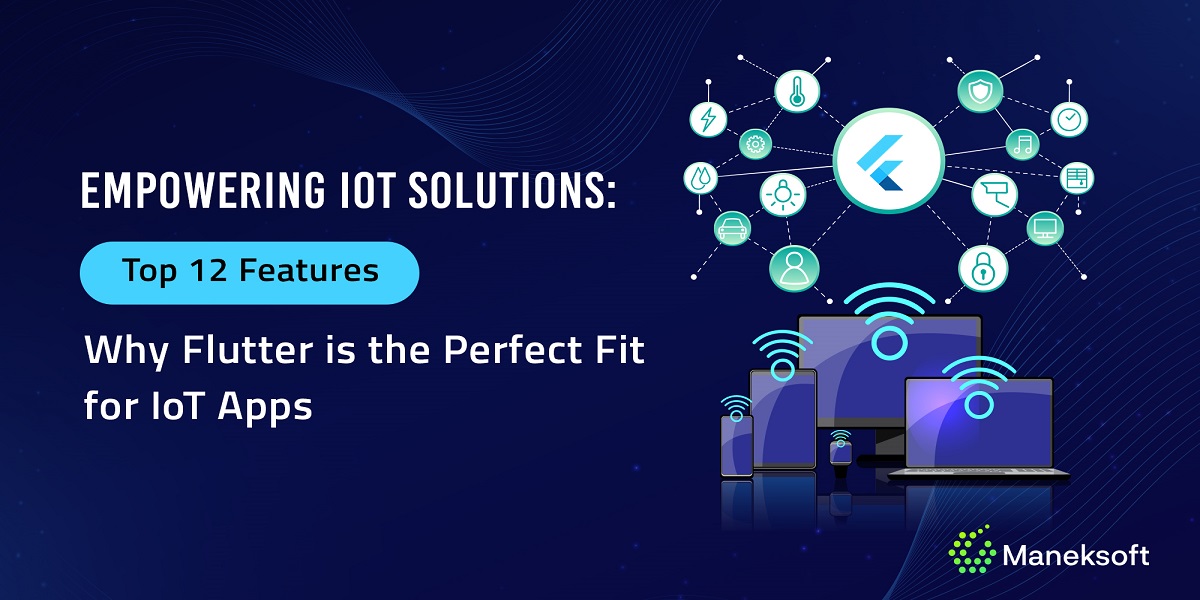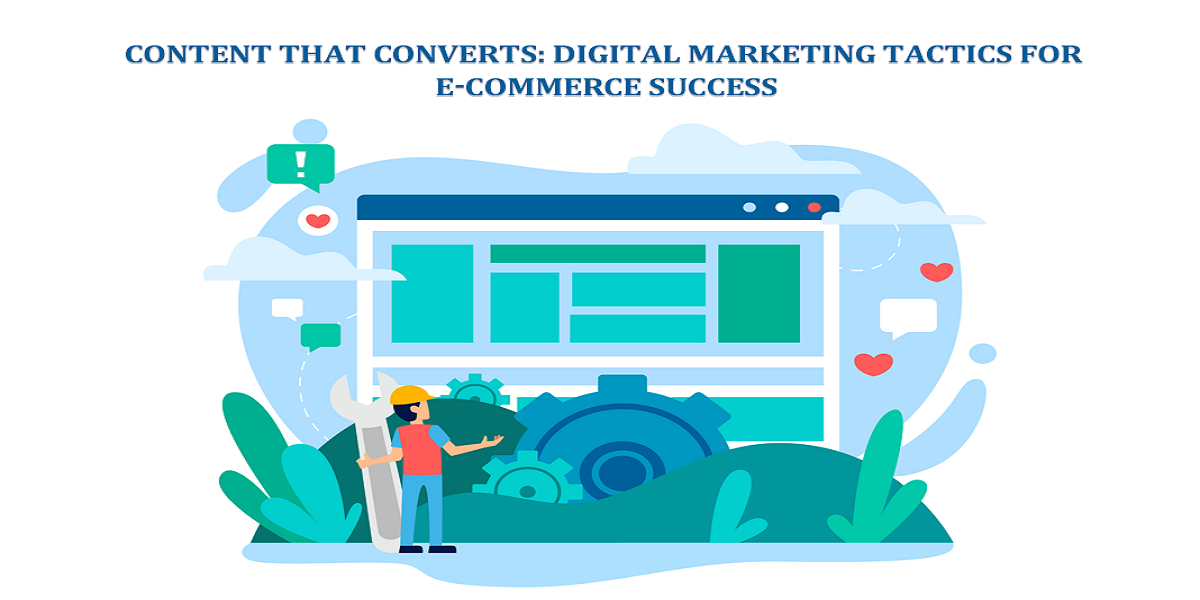
Empowering IoT Solutions: Top 12 Feature Why Flutter is the Perfect Fit for IoT Apps
- By Maneksoft
- 13-01-2024
- Mobile App Development
Apps with less development time and effort and minimum security risks are always a user’s choice. Multi-platform availability, resource efficiency, and increased optimum performance leverage every possibility of the app's success and retain users’ interests.
Today, when technology has redefined the way we communicate with our machines, it has also transformed the way machines interact with the commands given. For example, you can easily connect and operate your TV, lights, washing machine, etc. using your mobile phones, and this happens due to the conversations between two IP addresses via the internet, giving rise to the Internet of Things (IoT) technology.
IoT-enabled mobile applications now exist and are growing, ensuring the exponential growth of interconnected devices in the future. A large number of businesses are significantly catering to this and enjoying an engaging user base where interconnected devices are revolutionizing industries and daily lives. They are using the Flutter app development framework to create perfect cross-platform apps that help them meet the raging needs of their business’s reach and visibility.
If you are also looking towards finding a perfect IoT mobile app development solution for your business, seek an expert’s assistance and, in addition to that, see what they suggest as a profitable app development platform to witness the success of your app.
Flutter – An Extraordinary Framework
As a transformative UI development framework, Flutter is widely popular in the industry. It has been constantly impressing the app development world and empowering developers to present cutting-edge mobile development solutions. It has also set itself up as a market disruptor.
This Google-backed technology assures the creation of high-quality mobile applications, and its feature-rich UI SDK enables developers to create responsive features and intuitive UIs. It doesn’t just reduce the development efforts but also the cost and time of launch of the mobile applications, which makes it a top choice in the industry.
Flutter App Development
As per the RipenApps report, Flutter will be used as a primary app development tool by over 13887 companies in 2023, of which 17.26% are from the USA itself. As a top cross-platform app development framework, Flutter is used across the globe and has also gained an edge over its top competitor, React Native, obtaining dominance over the market with its substantially increased usage.
Flutter emerges as a powerful and versatile tool for developing IoT projects with a mobile app. Its unique set of features, capabilities, and advantages for users make it an ideal choice for app development. Also Read:- NFT Marketplace Development Cost: A Guide to Building an NFT Platform in 2024
Here are some essential features that make Flutter the best cross-platform development framework:
- Flutter allows developers to create a single codebase for all platforms.
- Its most celebrated ‘hot reload’ functionality accelerates development and makes the app highly efficient and productive.
- A rich set of customizable widgets offered by Flutter allows developers to create visually stunning and highly customized user interfaces.
- Flutter’s architecture facilitates a high-performance rendering engine known as Skia that ensures fast UI rendering and smooth animations.
- It allows developers to access native platform features and APIs for seamlessly integrating platform-specific functionalities into the Flutter app.
- The growing ecosystem of Flutter makes the packages and plugins to use available on the Flutter dev repository.
- The Material Design guidelines on Android and the Cupertino design principles on iOS ensure that your app maintains a consistent appearance.
- The passionate and active developer community at Flutter contributes to the growth of the framework by creating plugins.
- Flutter targets web and desktop platforms, giving developers the additional advantage of building applications that run on a wide range of devices.
- As an open-source framework backed by Google, Flutter adds credibility to its client projects by ensuring ongoing development and support.
- Using the same codebase across different platforms streamlines the testing process while improving overall app quality.
- Flutter-based applications are cost-effective by nature.
Let’s discuss some simple yet important examples to understand why your IoT app needs Flutter and how Flutter’s capabilities and possibilities can empower IoT solutions.
1. App Security - App security is of high importance in today’s digital landscape as human lives have now become more interconnected with mobile applications, and Flutter trustfully contends in this realm. Flutter identifies, detects, protects, responds, recovers, and updates security risk prioritization involving functioning through its robust Dart language and secure architecture.
By employing encryption and authentication measures and following practices like secure API key storage and code obfuscation, any Flutter app developer can fortify the security of Flutter applications while safeguarding user data and maintaining trust.
2. Real-Time Data Processing – Flutter facilitates easy and quick visualization of real-time data to create dynamic and interactive user interfaces. Flutter developers can seamlessly isolate and combine individual components, enabling the integration of the application with various charting libraries. This facilitates presenting data in a visually compelling manner by effortlessly incorporating various chart types like pie charts, line charts, bar charts, etc. Thus, developers get empowered to create immersive data visualization experiences, facilitating users to acquire valuable insights from the collected data using an IoT device in real-time.
3. Implementing NFC Features - As a cross-platform mobile app development platform, Flutter supports Near Field Communication features on Android and iOS to store and retrieve data using NDEF tags that behave like a storage layer without needing any power source. Flutter developers can add NFC functionality to their mobile apps by following platform-specific instructions, considering the difference between how this feature is used on Android and iOS devices. However, this feature opens up opportunities for diverse use cases, enhanced user experiences, and seamless interaction with IoT devices.
4. Offline Functionality – Flutter’s online capabilities seem more crucial while building IoT apps. The robust offline support assured by the framework ensures the connectivity of the IoT apps with enhanced user experiences even during challenging network conditions. Flutter makes the users remain connected and productive, maximizing the usage of their IoT devices and applications. The extensive offline working capabilities in Flutter leverage efficient data synchronization, seamless integration with local databases, intelligent data caching, and effective conflict resolution strategies to provide high-performance offline experiences.
5. BLE Connection – Flutter harnesses the power of BLE technology to unlock the potential to develop highly efficient and versatile IoT applications that help meet the growing demand for control and connectivity in IoTs. BLE lets the devices communicate without internet connectivity. It consumes less power but ensures better compatibility with smartphones and independence from the extensive network infrastructure.
How does Maneksoft assist Businesses in Obtaining the best-quality Flutter-based IoT apps?
Maneksoft is a top-class mobile app development company in the USA, and it excels at building the best IoT products by utilizing Flutter to provide secure and seamless connectivity to its users. Experts in the company believe that Flutter empowers its developers to go beyond the scope of traditional IoT app development methods and practices. Hence, they came up with a vibrant community that is constantly working on continuous advancements, providing endless opportunities to explore as well as leverage the potential of Flutter in the ever-expanding and dynamic world of the Internet of Things.
Recent blog

How NASA Uses Web Design to Optimize User Experience in Space Control
Web Design | 03-05-2024
Content that Converts: Digital Marketing Tactics for E-Commerce Success
E-commerce | 02-05-2024.png)




